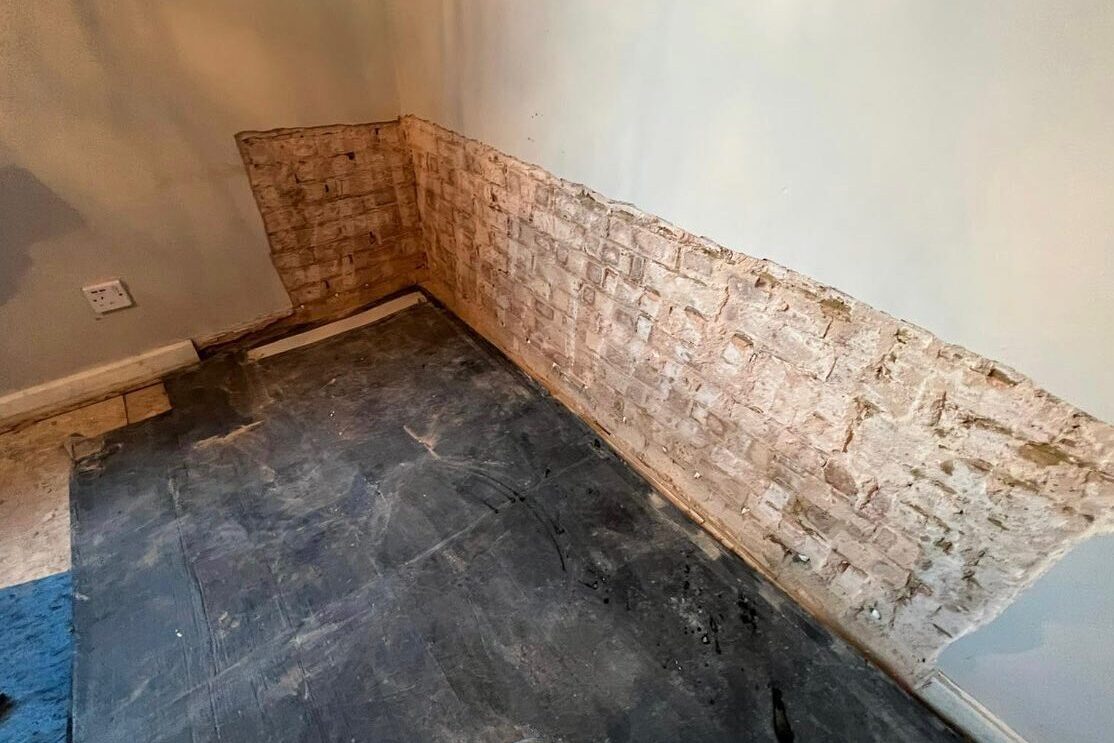Damp proofing limits moisture entry into your home through structural improvements, drainage repairs, and better ventilation and insulation. Damp proofing includes structural changes, drainage repairs, and enhanced ventilation and insulation. Here are 7 types damp proofing solutions:
- New Damp-Proof Course
If your DPC is damaged or nonexistent, a damp specialist can inject a new damp-proofing cream into the wall to prevent moisture rising through the brickwork.
Credit: Twsitfix YouTube
- Lower Exterior Ground Level
Rising damp can result from ground levels higher than the DPC. Lowering the ground or removing structures built above the DPC can resolve this.
- Repair Guttering or Roof
Fixing leaks in the roof or guttering can prevent penetrating damp from damaging internal walls.
- . Damp-Proof Paint
For older properties with porous brickwork, silicone-based damp-proof paint can repel water. Seek professional advice for the best product.
- Use a Dehumidifier and Ventilate
To combat condensation, use a dehumidifier to reduce indoor humidity and ensure good ventilation by opening windows regularly.
- Install Air Bricks or Vents
Air bricks or vents can improve air circulation, especially in older homes with non-cavity walls and timber floors.
- Change Your Habits
Minimise condensation by using extractor fans, keeping doors closed during cooking and showering, airing your home regularly, and avoiding drying clothes on radiators.
By following these steps, you can effectively damp-proof your home and protect both your property and health.
Are you struggling with an ongoing damp problem? We’re here to help. Get in touch with our friendly team today to discuss how we can solve your damp problem for good.
What Causes Damp?
There are three main causes of damp, and correctly diagnosing the issue is key to finding the right solution.
1. Rising Damp
Rising damp occurs when water from the ground rises through brickwork. Most homes have damp-proof courses (DPCs) to prevent this. However, older properties might lack an effective DPC or have one that has deteriorated. Signs of rising damp include:
- Tide marks on walls
- Salty deposits
- Brown or yellow patches
- Peeling wallpaper or flaking paint
- Rotting skirting boards
- Musty smell
- Black mould
2. Penetrating Damp
Penetrating damp is caused by external moisture entering through faults like damaged roofs, leaking pipes, or faulty pointing. Unlike rising damp, penetrating damp often appears higher on walls, ceilings, or in room corners. Look out for:
- Blistered plaster
- Damp patches high on walls
- Rotting timber
- Mould growth
3. Condensation
Condensation is a common cause of damp, often resulting from poor ventilation and human activities. It forms when excess moisture from cooking, bathing, or drying clothes condenses on cold surfaces like windows. Excess moisture is typically due to:
- Poor ventilation
- Steam from cooking or bathing
- Indoor clothes drying
Legal Standards on Damp and Mould in Rented Homes
Private and social landlords must adhere to legal standards to ensure tenant safety and avoid prosecution.
Legal Standards for Housing Providers
There are five main legal standards related to damp and mould in rented homes:
Free from Category 1 Hazards
- The Housing Act 2004 mandates that properties must be free from the most dangerous ‘category 1’ hazards, as assessed by the Housing Health and Safety Rating System (HHSRS). This includes all types of damp and mould. A ‘category 1’ hazard indicates that an occupant or visitor may need medical attention within a year. Local councils can also act on ‘category 2’ hazards.
Health Conditions
- All homes must not contain conditions that are prejudicial to health.
Source: The Environmental Protection Act 1990
Annex E – Tenant Guidance on Damp and Mould
These resources help tenants address damp and mould in rented properties:
- How to Rent: A guide for private sector tenants on understanding their rights and the rental process.
- Guide for Tenants: Homes (Fitness for Human Habitation) Act 2018: Information for social and private tenants about their rights under this Act.
- Damp and Mould: What Tenants Need to Know – Shelter: Answers to common questions, covering health impacts, causes, and solutions for damp and mould.
- Damp and Mould in Private Rented Homes – Shelter: Advice for private tenants on identifying and addressing damp and mould issues with landlords.
Damp Proofing FAQs
What Is Damp Proofing?
Damp proofing involves steps to limit moisture entering your home through:
- Structural changes
- Drainage repairs
- Improved ventilation and insulation
Does Damp Proofing Work?
The success of damp proofing depends on correctly diagnosing the problem. Proper identification allows for effective solutions.
Can You Do Damp Proofing Yourself?
While DIY steps can help, especially for condensation, severe issues like rising or penetrating damp often require professional intervention. Address habits causing excess moisture or advise tenants on reducing condensation.
What to Do if You Have a Damp Problem?
Start with a professional damp survey to assess:
- Ground levels vs. internal floor levels
- Roof and chimney condition
- Rainwater pipes and guttering
- Wall structure

